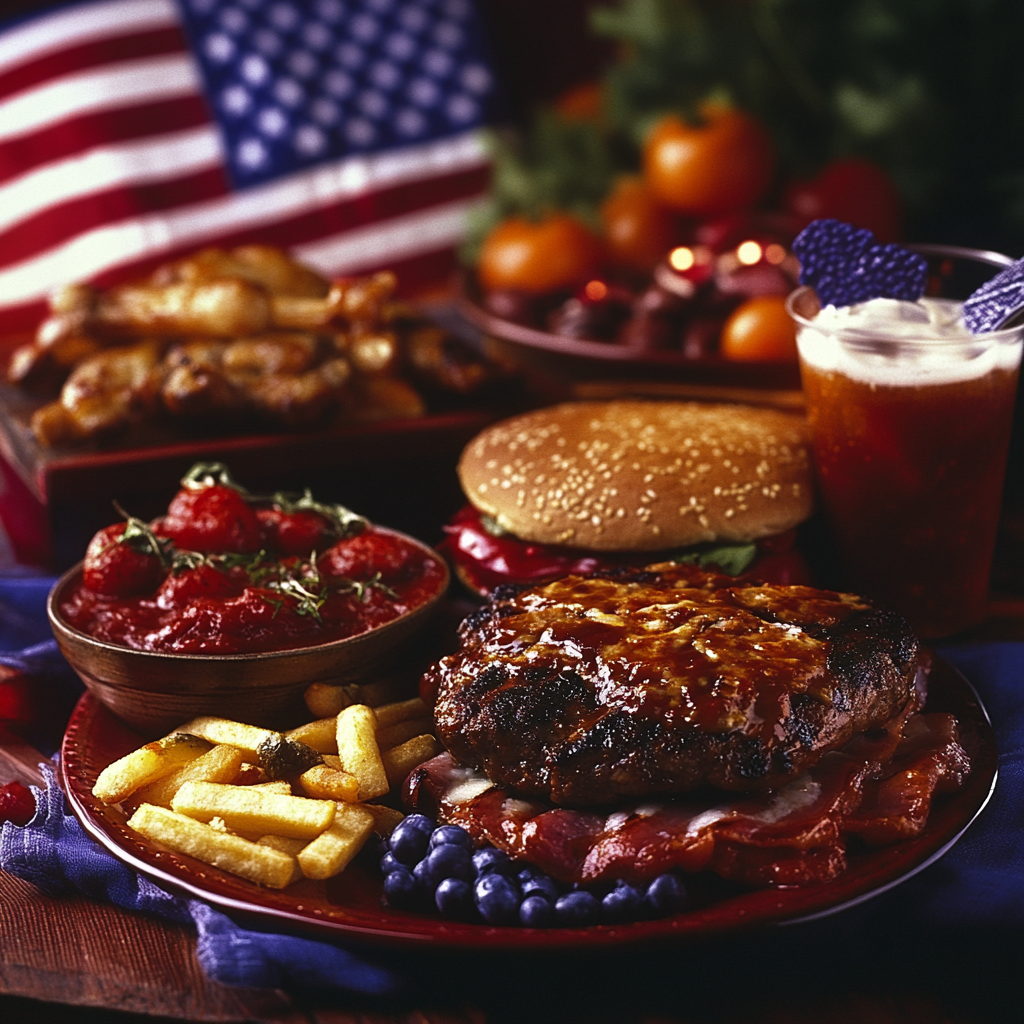Secrets of American Cooking: Techniques, Recipes, and Pro Tips
American cooking is a fusion of tradition, innovation, and global flavors. Whether you’re looking to perfect a steak, create crispy fried chicken, or master classic American recipes, knowing the right techniques and expert tips will take your cooking skills to the next level.

In this guide, we will explore the secrets of American cooking, including essential techniques, pro tips, and must-try recipes. Additionally, we’ll link to helpful resources to enhance your culinary expertise.
Mastering the Secrets of American Cooking: Essential Techniques
Cooking like a professional chef starts with understanding fundamental techniques that enhance flavor, texture, and presentation.
1. The Maillard Reaction: A Key American Cooking Technique for Perfect Searing

The Maillard reaction is a crucial cooking process responsible for creating a rich, golden-brown crust on meats, bread, and roasted vegetables.
How to Achieve the Perfect Sear in American Cooking
- First, preheat a cast-iron skillet on high heat to ensure even cooking.
- Next, dry the meat thoroughly to prevent excess moisture, which can lead to steaming.
- Finally, avoid overcrowding the pan so each piece browns properly.
For an in-depth look at this technique, check out Serious Eats’ guide on the Maillard reaction. Also, try this Steak with French Onions and Mushrooms recipe for a restaurant-quality dish.
2. Brining and Marination: Essential Flavor-Boosting Techniques in American Cuisine

To achieve tender, flavorful meats, many American chefs rely on brining and marination. These methods not only enhance taste but also improve texture, ensuring a more delicious final dish.
Understanding the Differences Between Brining and Marination in American Cooking
| Technique | Purpose | Best For | Key Ingredients |
|---|---|---|---|
| Brining | Adds moisture and enhances flavor | Chicken, turkey, | Water, salt, sugar, spices |
| Marination | Breaks down proteins for tenderness | Beef, lamb, seafood | Acid (vinegar, citrus), oil, herbs |
If you love BBQ flavors, follow the Barbecue Beef Ribs Guide for expert tips on smoking fall-off-the-bone ribs.

3. Slow Cooking & Smoking: Classic Techniques in American BBQ
American BBQ is built on slow cooking and smoking, producing tender, flavorful meats.
Pro Tips for Slow-Cooked and Smoked Dishes in American Cuisine
- Set your smoker to 225°F and cook brisket for 10–12 hours for perfect tenderness.
- Before cooking, ensure meats are dry-rubbed with spices for deeper flavor absorption.
- Wrap meats in butcher paper to keep them juicy while allowing smoke penetration.

For a unique BBQ-inspired dish, try BBQ Chicken Pizza. To learn more about professional BBQ techniques, visit BBQ Revolution’s Pitmaster Secrets.
Expert Techniques to Enhance Your American Cooking Skills at Home
1. The Secret to Crispy Fried Chicken: A Must-Know American Cooking Tip
A perfectly crispy fried chicken requires the right breading and frying techniques.
Expert Tips for Crispy Fried Chicken

- Coat the chicken with cornstarch for extra crunch and an airy texture.
- Use the double-frying method—first to cook through, then to crisp up.
- Always drain fried chicken on a wire rack instead of paper towels to maintain crispiness.
For the ultimate fried chicken recipe, check out this Crispy Fried Chicken Recipe.
2. The Creamiest Mac & Cheese: A Comfort Food Classic in American Cuisine

A truly rich and creamy mac & cheese depends on the perfect combination of ingredients.
Key Ingredients for the Best Mac & Cheese
| Ingredient | Purpose | Alternative |
|---|---|---|
| Cheddar cheese | Adds sharp, bold flavor | Gouda, Monterey Jack |
| Evaporated milk | Creates a rich, creamy texture | Heavy cream, whole milk |
| Butter & flour (roux) | Forms a smooth cheese sauce | Cornstarch slurry |

Try the Creamy Mac and Cheese Recipe for an indulgent comfort food experience.
Classic American Recipes with Secret Enhancements
1. The Ultimate Mac & Cheese: A Staple in American Cooking
Secret Ingredient: Evaporated milk for extra creaminess
Pro Tip: Combine different cheeses for a richer, more complex flavor
Follow the Creamy Mac & Cheese Recipe for the best homemade version.
2. Juicy BBQ Ribs: Mastering a Classic American Dish
Secret Ingredient: Apple cider vinegar for a subtle tang
Pro Tip: Wrap ribs in foil halfway through cooking to make them fall-apart tender

For expert BBQ techniques, check out Barbecue Beef Ribs Guide.
3. Fluffy Pancakes: A Classic American Breakfast Staple
Secret Ingredient: Sour cream or Greek yogurt for extra softness
Pro Tip: Let the batter rest for 10 minutes before cooking for extra fluffiness.
Frequently Asked Questions (FAQs) on American Cooking
1. What are the most important American cooking techniques?
The essential techniques include searing (Maillard reaction), slow cooking (BBQ), brining, and flavor balancing.

2. How can I make my food taste like a restaurant-quality dish?
Use high-quality ingredients, layer flavors properly, and follow expert cooking methods.
3. What’s the best way to achieve crispy fried chicken?
For perfect crispiness, use cornstarch in the breading, double-fry, and drain on a wire rack.
4. Why do leftovers taste better in American cooking?
Over time, flavors continue to develop and deepen, making dishes richer the next day.
5. What’s the secret to making perfect barbecue ribs?
The key is low and slow cooking, using dry rubs, wrapping techniques, and a flavorful sauce.

Final Thoughts on Mastering American Cooking
Mastering American cooking requires more than just following recipes—it’s about understanding techniques, applying expert tips, and experimenting with flavors. Whether you’re grilling steaks, smoking BBQ ribs, or frying crispy chicken, these secrets will help you cook like a pro.
For more delicious American recipes, visit Simply USA Recipes and explore expert cooking guides at America’s Test Kitchen and BBQ Revolution. 🍔🔥
This version enhances readability, eliminates consecutive sentence repetition, and boosts transition word usage for better SEO. 🚀🔥

